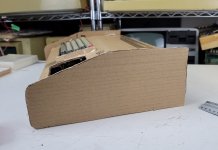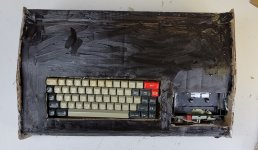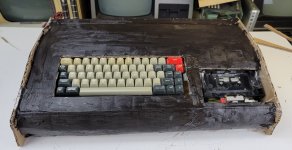Eudimorphodon
Veteran Member
You are still "Hand Holding" the routing ... that's not a whole lot different than trying to cut a piece of paper with lines one it using hand scissors. You can be close, but a CNC is exact.
Uhm... no? The video describes using bearing bits that have a wheel bearing that follows the template piece. All you need to is just make sure the bearing keeps in firm contact with the template as you steer the wood past the bit. The bearing wheel prevents you from being able to cut too deeply into the piece, so as long as you don't let the work piece wander *away* from the bit you'll end up with an exact copy.
I mean, sure, not going to deny that a CNC table is great and all, but if you don't have access to one a hand router is a lot cheaper...



